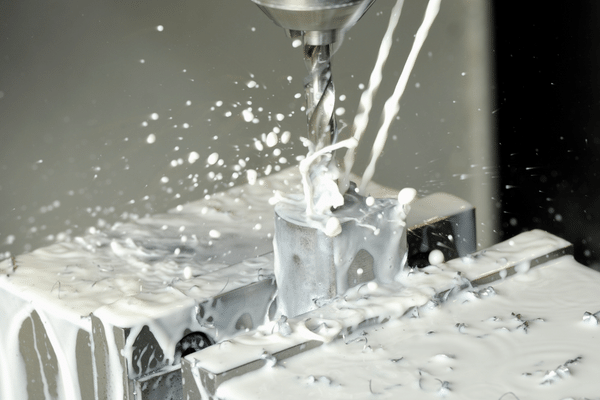Magnesium is a great metal. It’s lightweight, strong, ductile, corrosion-resistant, and weldable. However, it does have one drawback – it can be difficult to machine. Is magnesium as easy to machine as aluminum? No! Unlike other metals, like aluminum and steel, that can be easily cut in any machine shop with a variety of techniques and tools (welding, plasma cutting, waterjet cutting, etc.), machining magnesium requires special equipment (mill) to tackle the intense heat that is produced when machining this material.

What are the properties of magnesium that make it difficult to machine?
Magnesium is a very difficult material to machine. It’s hard, brittle, and has low thermal conductivity.
The hardness of the material is caused by the presence of microscopic magnesium dendrites (branch-like crystals), which form on the surface. The brittleness is caused by the formation of these dendrites and their tendency to break off from the parent material when stress is applied.
Because of its hardness and brittleness, magnesium can be machined using only carbide or high-speed steel tooling. Carbide tooling has a longer life and can be used for roughing cuts but cannot be used for finishing cuts because it will wear out quickly under normal conditions. High-speed steel tooling can be used for roughing and finishing cuts but will not last as long as carbide tooling under normal conditions.
Magnesium also has poor thermal conductivity, meaning it takes longer than other materials to reach maximum cutting temperatures during machining operations. If a lot of heat is generated in one area while another area remains cool, this can cause localized warpage which can lead to tool breakage or, even worse, catastrophic failure of your part being machined!
How can these properties be overcome?
Use a coolant: This allows you to keep temperatures low during machining operations so chips don’t form as easily on your workpiece and prevent tool breakage from occurring prematurely during your project’s completion date.
Choose an appropriate cutting tool: There are many different types of tools available for machining different types of materials, such as carbide inserts, diamond tools, and high-speed steel cutters, among others.
Use the correct cutting speed: The speed at which your cutting tool moves through your workpiece is known as its cutting speed. This will vary depending on the material you’re machining. Still, if you’re unsure what it should be, ask your tool supplier for guidance – The correct cutting speed will ensure that your tool can cut the material effectively without overheating or causing damage. The higher the speed, the faster you can cut through a piece of metal with minimum effort.

Benefits of CNC Machining with Magnesium
Precision: CNC machines are incredibly precise, allowing them to cut very small features. In addition, they can be programmed to make multiple parts at once or to perform complex operations on one part. This allows for faster production rates and higher-quality parts without sacrificing precision.
Cost Savings: The cost of creating a custom part using CNC machining compared with other methods of manufacturing can be significantly less expensive because the technology allows for fewer rejects due to human error in programming or machining than other methods such as EDM or wire cutting which require more manual labor and time-consuming setups.
Time Savings: When compared with other manufacturing processes, CNC machining allows you to save significant time by eliminating many steps involved in traditional manufacturing methods such as EDM or wire cutting, where each piece must be made individually by hand or by machine tool operator who must manually set up each tool for each piece. Because CNC machining allows for a much larger amount of pieces to be made in a shorter period than other methods, it can significantly reduce the time needed to manufacture your parts.
What type of cutting fluid is recommended for milling magnesium?
When milling magnesium, there are two choices for cutting fluids: water-soluble and oil-based. Water-soluble fluids are more popular because they can be used in machines with no coolant system.
Water-soluble cutting fluid is low in cost and easy to use, but it has several disadvantages. It can’t be used in any machine with a coolant system because it would clog the system and ruin it. It also leaves a residue on the workpiece, leading to poor chip evacuation.
Oil-based cutting fluids offer some advantages over water-soluble fluids. They don’t leave a residue on the workpiece, so they’re better for machining parts that must be cleaned thoroughly before assembly or further processing. In addition, oil-based cutting fluid is good for difficult machining materials like stainless steel because it helps prevent tool wear on carbide inserts and prevents overheating of tools made from high-speed steel (HSS).

Conclusion
But if you think a pure magnesium case isn’t for you just because it may be difficult to machine, there’s another option. Using the hybrid Mg/Al-alloy adds a couple of new challenges to the mix — mostly regarding post-machining and finishing. It can be tricky to avoid bright-work burnishing and keep oxide flaking at bay. And it takes a bit more tweaking of your post-machining deburring process using steel shot, but a hybrid magnesium case is much easier for the machine when executed correctly.


